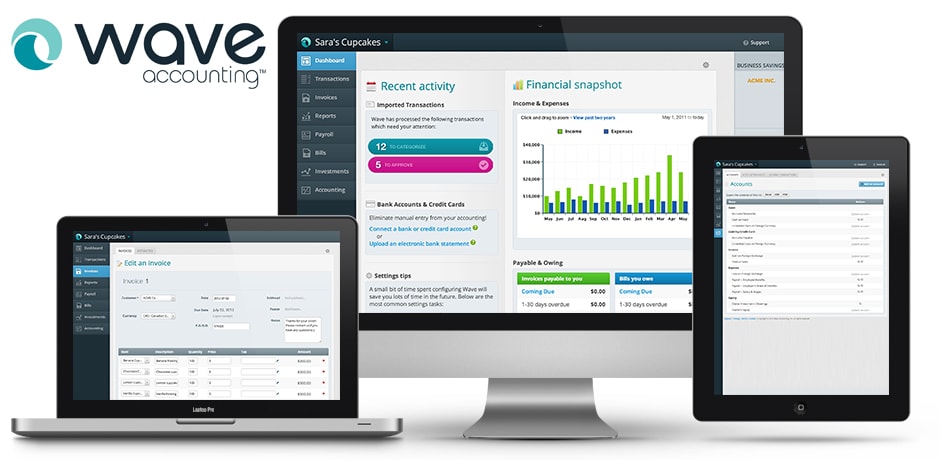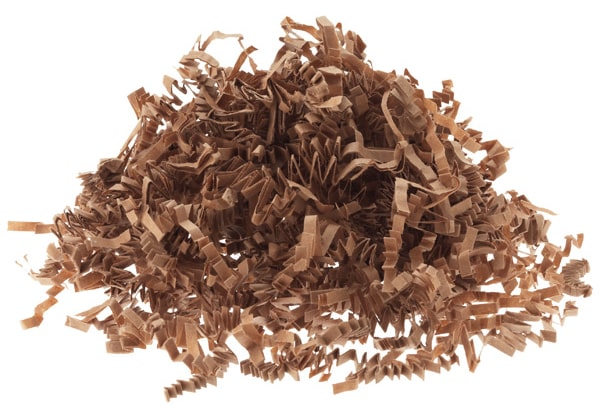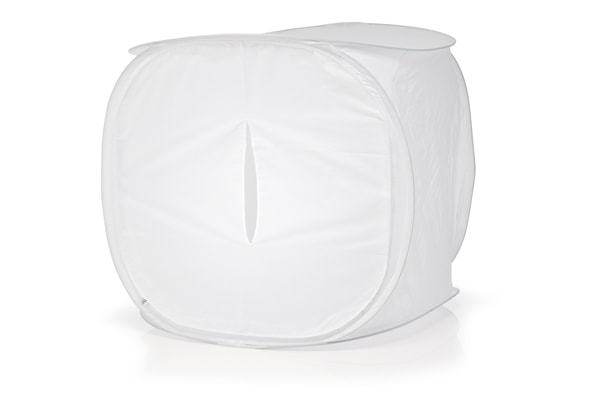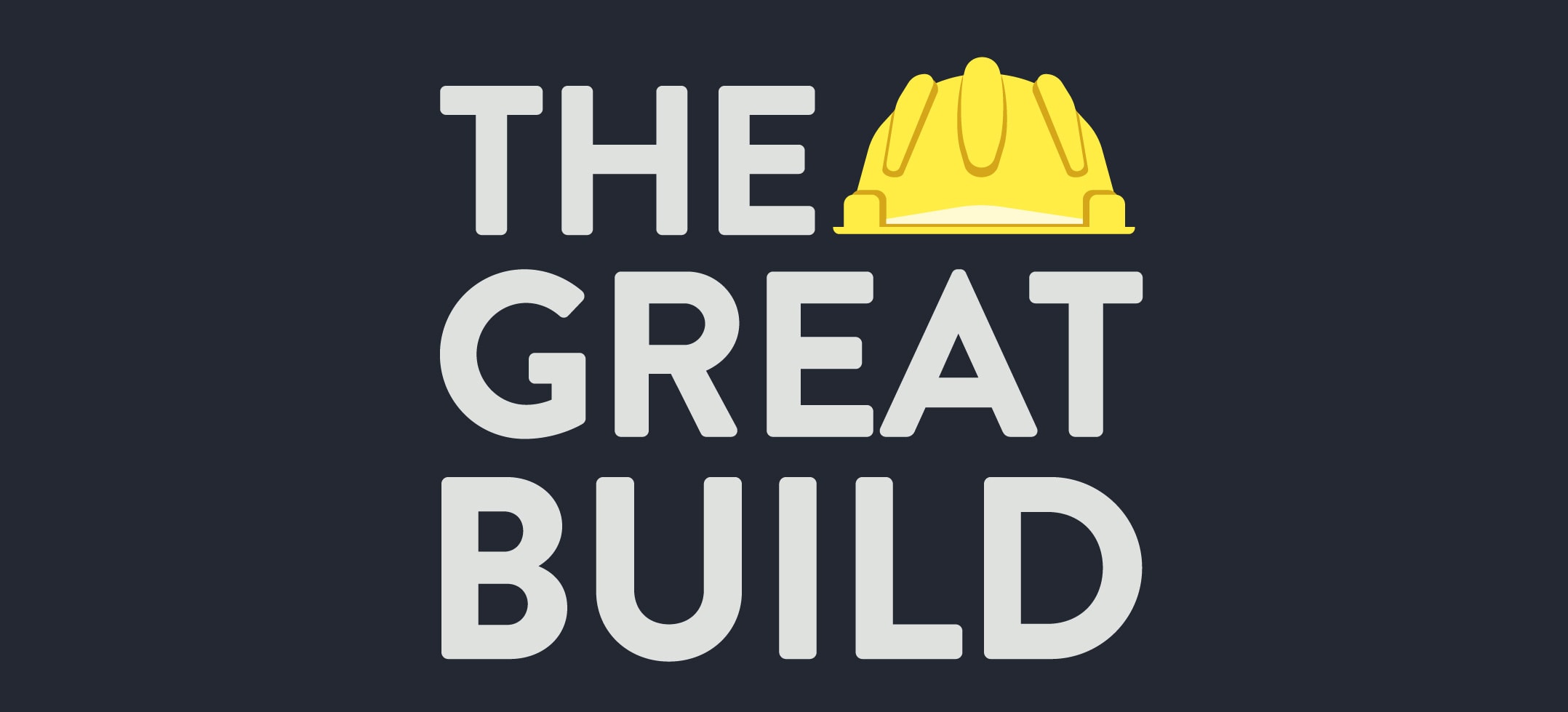
#TheGreatBuild: Behind the Scenes of a 6-Month Old Ecommerce Business
Welcome to #TheGreatBuild, a series dedicated to starting an ecommerce business from scratch. In this series, the founder of A Better Lemonade Stand, Richard Lazazzera, shares the lessons he learns and the strategies he tries as he builds his own ecommerce business from the ground up. This series has been created with the intention of showing other new entrepreneurs what it takes to start an ecommerce business so it will hopefully inspire them to start their own online business, too.
To read all the blog posts included in this series, navigate using the Table of Contents down below.
Table of Contents
- #TheGreatBuild: Choosing a Niche & Product to Sell Online
- #TheGreatBuild: Product & Niche Evaluation
- #TheGreatBuild: The Great Reveal of My Product & Niche Selection
- #TheGreatBuild: Make, Manufacture, Wholesale or Drop Ship
- #TheGreatBuild: Negotiating with a Manufacturer
- #TheGreatBuild: Choosing a Shopping Cart
- #TheGreatBuild: Pivoting
- #TheGreatBuild: How to Build a Brand Persona
- #TheGreatBuild: Unveiling My Brand
- #TheGreatBuild: DIY Product Photography
- #TheGreatBuild: How to Launch a Business
- #TheGreatBuild: First Month Revenue & Marketing Report
- #TheGreatBuild: Behind the Scenes of a 6-Month-Old Ecommerce Business
Time flies. It’s been about six months since I launched Finch Goods Co., a curated selection of men’s goods and lifestyle products. I mentioned in one of my first post for #TheGreatBuild that I didn’t know exactly how far I would take #TheGreatBuild in terms of documenting this new business. On one hand, I want to provide enough inspiration and actionable advice for you to create your own business but, on the other hand, this is a legitimate business for me and you know what they say:

Today, I’m going to share with you a six-month update. This post is jammed with value. Probably one of my most valuable posts yet but I have left out a few details and I ask that you respect that. In the last few months, there have been a few duplicate websites to Finch Goods popup that are without any shadow of a doubt, direct copies. The name, logo, store theme, suppliers, products and descriptions are taken directly from me. I guess it was to be expected, however, I must stay ahead of the competition so I will be keeping some things to myself.
Over the last six months, I have been primarily working on refining the ecommerce brand and what Finch Goods stands for. I have also been curating new products, building a rock-solid marketing foundation for the site, and testing the waters of several marketing channels to determine future direction. I’ve got some really great things to share with you, so let’s jump into it.
The Biggest Challenges
Every business presents its own set of unique challenges to overcome and learn from and Finch Goods is no exception. My biggest challenges for Finch Goods can be categorized into two, albeit slightly similar, categories:
- Curation: My brand is based on curation. I curate the best in men’s accessory products, choosing the best style, quality, and value. That’s my unique value proposition and I’m learning more and more how important that is. Haphazardly choosing products leaves me at risk of holding inventory that I can’t get rid of, and worse, damaging my brand so that people don’t think of Finch Goods as highly as they would think of their best friend’s recommendation, which is the level I want Finch Goods to be on. I don’t have exact numbers but if I had to guess, I’d say that for every one product I choose to carry at Finch Goods, I carefully look at and consider 25 and browse through close to 250. All of this adds up to a large time commitment.
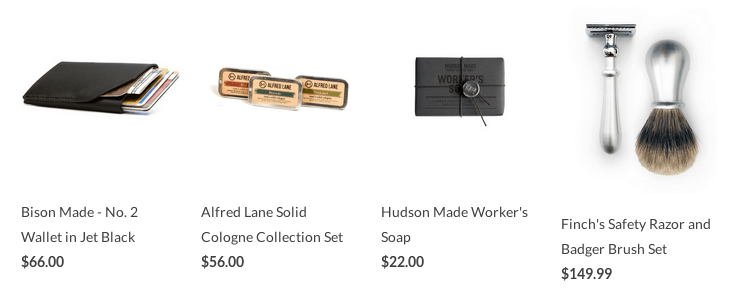
- Supplier Relationships: Initiating, building, and managing dozens of supplier relationships is difficult. First, there’s the contact stage. I have to contact each of the suppliers whose products I am considering to open up a dialogue with them to find out more about their story, their products, their minimum orders, and wholesale costs. Some will reply right away, some will reply in a few days, and some will never reply and will require multiple follow-ups. Once I do make contact, there’s usually a few more emails back and forth to get to the details.
Managing all this back and forth communication gets complicated. Generally, my inbox is a mash of read, unread, drafts and pending decisions.
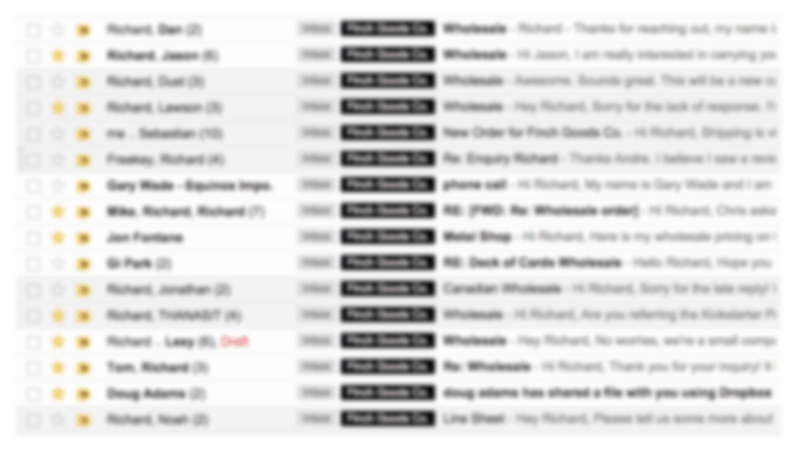
On a good note — because I am working with mostly smaller companies, suppliers, and manufactures — minimum orders are usually pretty reasonable. There have been a handful that are too big for me to handle right now, however, again, many of these suppliers have been great when I explain to them that this is a new business and ask for exceptions for my first order. Most entrepreneurs want to help other entrepreneurs if they can.
Building a Solid Marketing Foundation
As mentioned at the beginning, I’ve been spending a lot of time building a rock-solid marketing foundation. I recently wrote a post on the Shopify blog that breaks down several critical elements of a solid marketing foundation. I’ll paraphrase some of that here and provide examples from Finch Goods to illustrate the point.
Think of your ecommerce store as a bucket. It takes a lot of time and money to keep filling that buck up with water (web traffic). The problem is, your bucket has lots of holes in it so the water keeps leaking out.
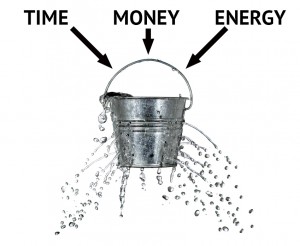 There’s not much point in spending so much time, money, and energy in driving traffic to your site if you’re just going to be losing most of it out of the holes. That’s why it’s so important to plug the biggest holes before you start diving deep into marketing.
There’s not much point in spending so much time, money, and energy in driving traffic to your site if you’re just going to be losing most of it out of the holes. That’s why it’s so important to plug the biggest holes before you start diving deep into marketing.
6 Foundational Ecommerce Elements to Plug Your Ecommerce Bucket Holes
There are six elements I consider critical to address before you start spending a lot of money and energy on marketing — especially paid marketing. Those six elements are:
- Upselling at checkout
- Email capture/newsletter signup
- Abandoned cart emails
- Referrals
- Exit-intent offers
- Retargeting
I have begun addressing each of these on Finch Goods. Let’s take a look at them in a little more detail:
Upselling at Checkout: Upsells give you one last opportunity to present the customer with a complementary product or unique offering that can also help increase your average order size.
I added a simple product upsell to my checkout for a single $10 product. It’s a tube of premium Single Malt Whiskey flavored toothpicks. These normally come in 4-packs for $40, however, after talking with a bunch of customers, I found that people are reluctant to pay $40 for toothpicks. By offering a single tube at checkout for just $10, I’m hoping those curious minds that aren’t ready for a $40 commitment will add this trial tube to their carts.
Product Upsell from BoldApps allows you to easily customize several different upsell offers depending on what the customer has added to their cart. While I’m currently just using a single blanket offer, in the future I can add other up-sell offers like a pack of razor blades when someone adds a safety razor to their cart.
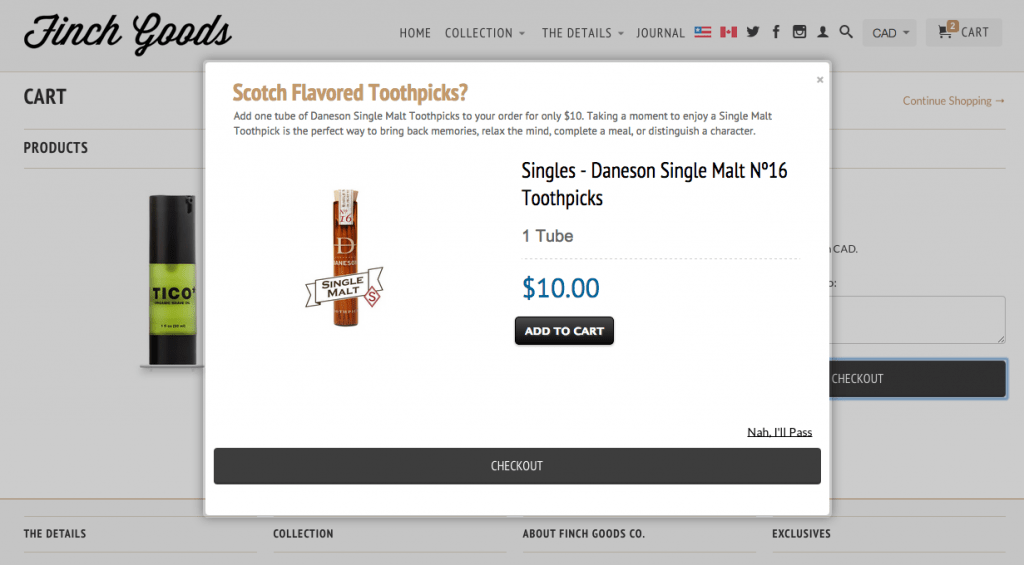
Newsletter Sign Up: Popups work. Plain and simple. The emails collected from a popup can be instrumental in bringing back visitors that leave your site. I have experimented with giving away a $5 credit for signing up to the newsletter but right now I simply ask them to join my newsletter so I can share new, curated products with them. Popups are built into Retina Premium Shopify Theme which I use for my store.
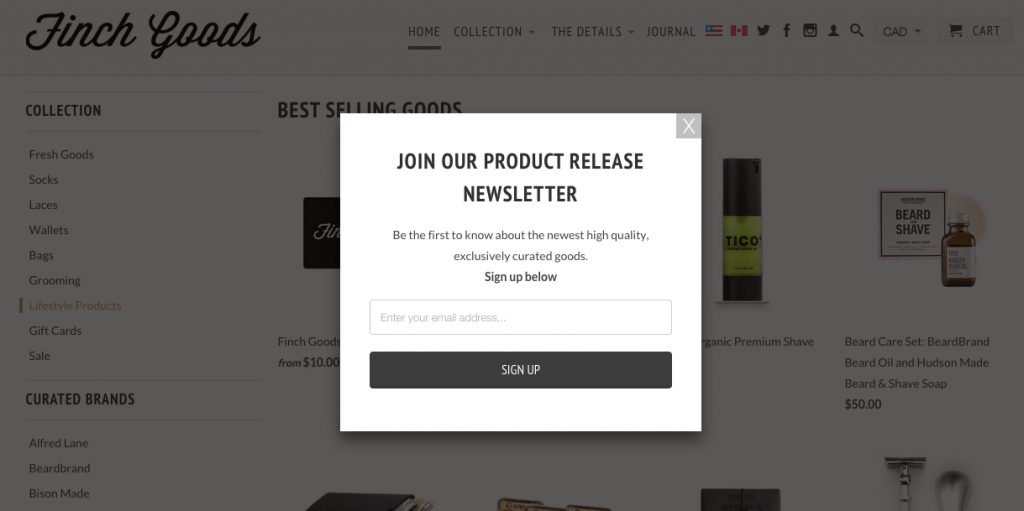
Abandoned Cart Email: Abandoned cart emails are an absolute must in ecommerce since an average of 68% of people abandon their carts. These cart abandoners had enough interest to check out your products and to add items to their cart making them pretty qualified leads. Abandoned cart emails give you an opportunity to bring that customer back to complete their transaction while it’s still fresh in their minds.
Klaviyo does way more than just cart abandonment emails. It allows you to easily set up and track all email marketing efforts and with its Shopify integration, it measures your email ROI.
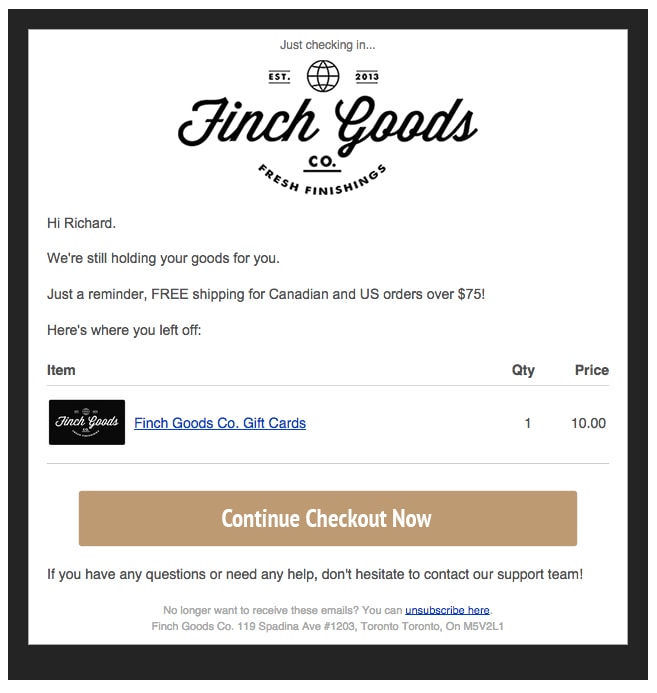
Referral Offer: Referral marketing is incredibly important as it’s rated time and time again as the most trusted form of marketing. In fact, according to Neilsen, people are four times more likely to purchase a product when referred by a friend.
Forewards really just takes a few clicks to set up, which I love. Once you install the Shopify app, it will ask you the type of customers you’re targeting with several built-in customer personas. After that, you select your referral reward and Forewards will automatically A/B test 2 different referral messages. See below for examples:


Exit Intent Popups: An exit intent popup represents your last chance to keep a customer on your site to make a sale before they leave. When someone tries to leave your site by either closing the tab or pressing the back button, an exit intent popup will appear. Currently, I am A/B testing two different popups, both of which were inspired by other famous brands’ exit intent popups (why reinvent the wheel?). For both of the popups I’m testing, I am giving away a $5 credit with the hopes that it will sway people to completing a purchase.
By analyzing the overall mouse velocity and movement, Picreel’s technology can detect when a visitor is about to leave your website and at that precise moment, trigger a popup to help prevent the visitor from leaving your page.
I love thatPicreel was super easy to get set up. They have a template editor for your popup, but those template editors never really produce a polished image. I was ridiculously happy when I found that you can also fully create your popup image in a program like Photoshop and upload it. From there, you just need to select where on the image you put your email box and where you put your submit button. It’s ridiculously simple and it gave me full control of the final popup.
Finch Goods Exit Intent Popup A/B Test
Popup A

Popup B
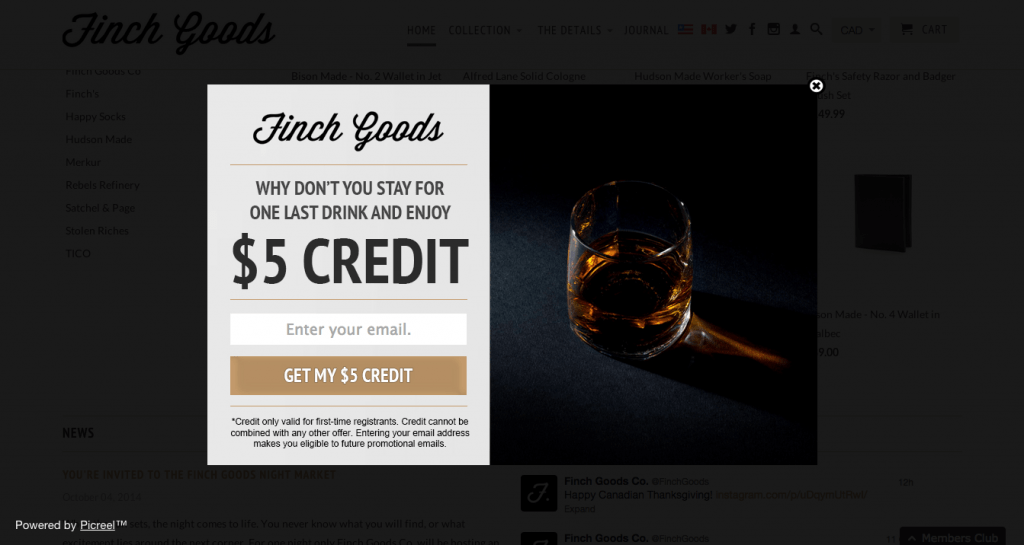
Adwords & Facebook Retargeting: Retargeting is the last piece, in my opinion, to build a solid marketing foundation. Retargeting ads have proven to be much more effective than traditional online ads. This is the one piece of foundational marketing I haven’t put into place yet. Over the next few weeks, I’ll likely begin testing several different ads — starting, most likely, with Facebook.
Customer Retention Tactics
The above six-point foundational marketing game plan will help me with initial conversions, but I have also been working on customer retention. I’m sure you’ve heard it time and time again that it’s cheaper to get past customers to purchase again than it is to find new customers. Knowing this, I have implemented several tactics to help with customer retention.
Customer Accounts
Customer accounts can be a double-edged sword: On one hand, accounts can make repurchasing much easier by giving customers easy access to past orders as well as pre-filled shipping information. On the other hand, customer accounts can be seen as too big of a commitment for new customers. Because of this, most people will choose to check out as a guest if given the option. Because of this, I don’t force customers to create accounts, rather I give them the option once they check out.

Customer Loyalty Program
I’ve been testing a loyalty program from Loyalty Lion. I was actually very surprised at how easy it was to get this up and running. This program rewards visitors and customers for completing actions like creating an account, making purchases, and referring friends. So far, I’m pretty happy with it, however, I do wish they had more actions that can be rewarded with points. For example, I want to be able to reward point when someone shares Finch Goods on Twitter.
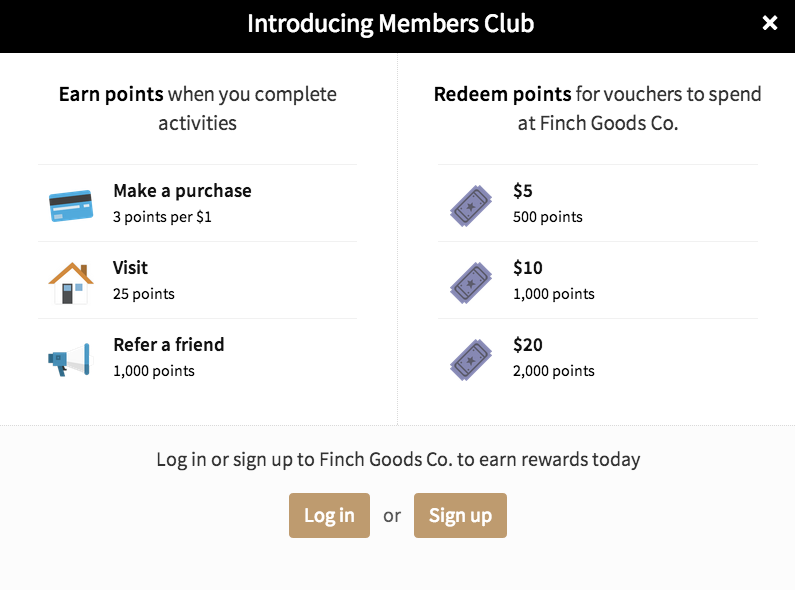
Sending Customer Newsletter Emails
To keep our email list engaged, I have been trying to send weekly emails featuring new curated products and sales. I am trying to get better about getting on a weekly schedule so that our subscribers come to expect an email and new products every Sunday. Here’s an example of our current email template which still needs some work:
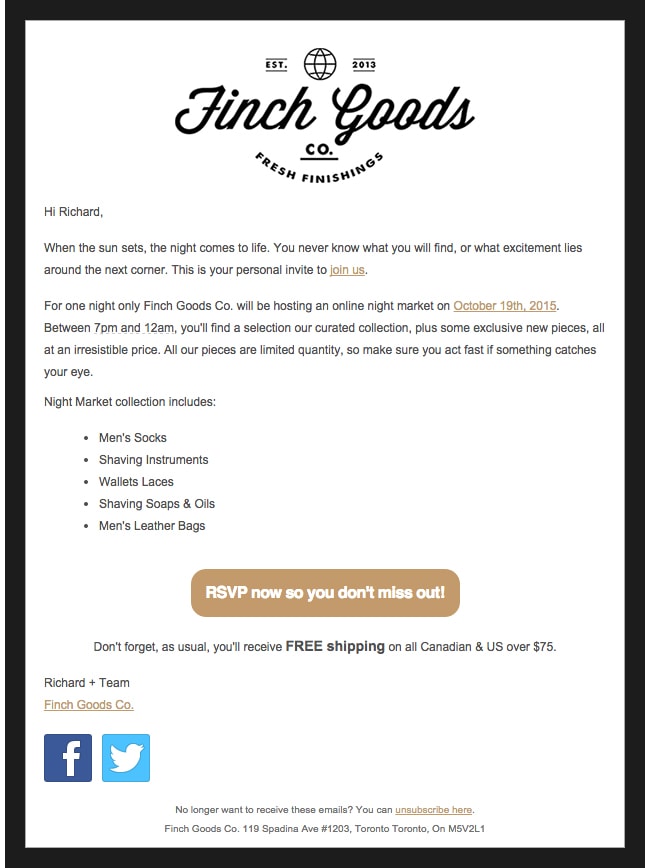
Surprise & Delight
Every chance I get, I try to surprise and delight our customers. This is sometimes as simple as handwritten cards with an order, a small additional gift with larger orders, and sometimes, I just send our best customers a gift at random just as a thank you.
Giving an unexpected gift plays to the law of reciprocity which refers to responding to a positive action with another positive action. These gestures usually result in additional purchases from our customers and, at the very least, they almost always post these things to their social networks which helps with word-of-mouth marketing.
Here are two examples:
Got my new @BisonMade iPhone wallet from @FinchGoods. Fantastic packaging. #style #handmade #freewhiskytoothpicks pic.twitter.com/zNfBK7Tx3O
— YYC Style Guy (@YYCStyle) October 11, 2014
And:
Now this is service & a personal note from the biz owner Richard @FinchGoods An absolutely perfect touch of class. pic.twitter.com/vbcFPiHoTu
— Peter G. Goral (@ArtsandClouds) October 23, 2014
Accounting
*Grumble* *Grumble*… Accounting, a necessary evil. Knowing your numbers can unequivocally make or break your business. For the first few months, I wasn’t keeping track because it was less important at that time. It was more important for me to prove the concept of the business and make sales. After a few months though, things started feeling messy. I was spending a lot on inventory, packaging, marketing, and shipping but I didn’t know really how much. It was time to get my accounting in order.
I looked at quite a few options, some free, some paid. Here are the ones I looked at:
In the end, I chose Wave Accounting. For me, it was the easiest to use, free, connects to my PayPal and business bank accounts, and did everything I need it to do at this point.
I was also impressed by Bench Accounting which is less an accounting system and more a slick app and virtual bookkeeper. Bench’s pricing starts at $119 per month, making this a premium option that I’m not quite ready for at this point but will be looking at as the business grows.
Operations
Although I have been in contact with several fulfillment warehouses, I am still shipping from my home office. Right now, the order volume is still perfectly manageable and I have chosen to keep fulfillment in-house so that I can continue to build the brand and customer loyalty through things like handwritten thank you cards, careful (and beautiful) packaging and sometimes including additional gifts into customer orders. This has worked out really well so far, as our customers regularly tweet and share Instagram photos of our packaging and their orders.
Office
I currently work and build Finch Goods out of my home office. Essentially, I have a storage unit at the back of the office that I keep all my inventory in and I keep the essentials for packing orders near my desk area. This includes:
- Boxes
- Crinkle paper stuffing
- Coffee bags (which I use for packaging smaller, non-breakable items)
- Coffee bag sealer
- Printer for order receipts and packaging labels
- Tape
- Pens/permanent markers
- Thank you cards
When an order comes in, it’s pretty quick now to grab the products ordered, print the customer receipt and shipping label, grab a box and package everything.

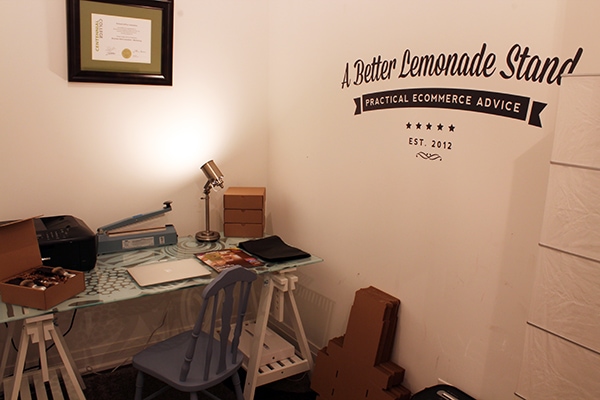
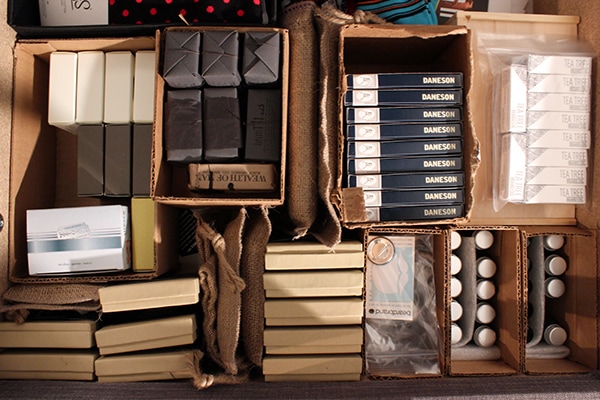
Inventory & Minimum Orders
Many people have asked me about my inventory and minimum orders for Finch Goods. To answer a few of your questions, when ordering inventory from a new supplier, I try to order as little as possible for my first order and adjust my next order based on sales. As you can imagine, I want to keep as little inventory as possible.
For the most part, because I’m working with smaller manufacturers and suppliers (because of the nature of Finch Goods’ products), most suppliers have been great about allowing me to make small initial orders. In general, I’ve found that most suppliers are looking for a minimum order of $300. Sometimes though, it’s based on the number of units per SKU, which I have found to generally be 3-5. Still small.
There are times where there’s a product I really want to stock but the minimum orders are too high. As was the case with a recent Finch Goods purchase. I was looking at a higher end, Horween leather gym/duffel bag that retails for $450 and the wholesale price was $225 with a minimum order of 3 units for each color bag. Even though 3 was a reasonable request, $2,025 was too much ($675 x 3 different colors). This has happened a few times and when it does, I will reply back to them with an email along the lines of this:
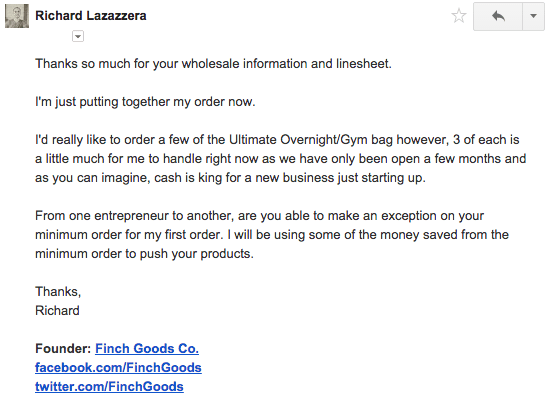
As mentioned, most of the time the suppliers have all been great. In general, entrepreneurs want to help other entrepreneurs and it’s really beneficial for them as well, unless they are so overwhelmed with orders that my small order makes their life harder. Here’s an example of one of the replies I’ve received:

Packaging Shipping & Fulfillment
For packaging, I currently have two options depending on what the customer orders. I have high-end matte black coffee bags as well as one standard-sized box that, so far, has been able to work for every order that is not appropriate for the coffee bags:
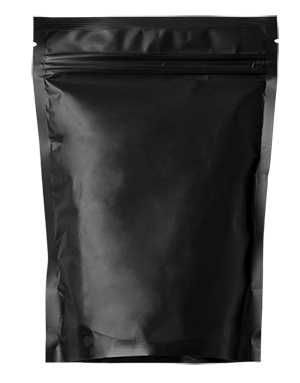

For packaging filler, I went with a crinkle paper:
Soon, I will be ordering black boxes and black crinkle paper to better match the brand:
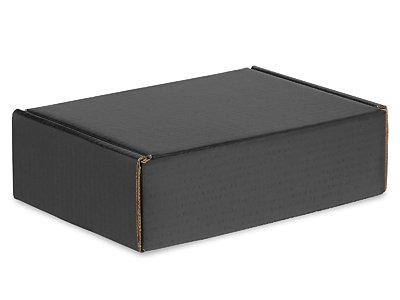
All packages are also stamped with a Finch Goods wax stamp as well, a handwritten thank you card is included with all packages.
As Finch Goods grows, this will start to become unmanageable. As mentioned, I have already been chatting with some warehouses. One, in particular, is one of the very few companies in North America that is using the KIVA system, which uses robots to fetch products from the warehouse as orders come in.
Although I’m not ready for a fulfillment warehouse yet, when the time comes to move to a fulfillment warehouse, I will be ready with the right fulfillment partner that is able and willing to continue to add the special little touches the brand is based on.
Brand Evolution
As I mentioned in my original branding for ecommerce post, a brand is organic and will change over time. Over the last several months, the Finch Goods brand has continued to evolve in positioning as I have better understood the niche I am in. After 6 months, I am starting to find the right position for Finch Goods amongst the sea of competitors. Generally, our competitors look like one of the following two personas:
All-American Rough & Rugged

Refined Dapper Gentlemen

I feel strongly that Finch Goods fits somewhere in between these two personas, although I have yet to label this particular persona. It will take some more time, but I am positive that Finch Goods will find our perfect brand and market fit.
Social Media
Social media growth was pretty healthy with a strong boost to my Instagram account. Details on how I accomplished this are further down in the report.

Other Tracked Metrics:
- Average Order Size: $91.12
- Conversion Rate: 0.5% (Keep in mind that because of this blog, I get a large amount of unqualified traffic to Finch Goods which lowers my conversion rate)
Growing Finch Goods
Growing an online business is no easy task. It takes a lot of time, strategy, execution, testing, and tweaking. As you can see, I have built a good foundation and started to really zero-in on the brand and its direction. Over the next few months, I have a few growth strategies I am going to be focusing on:
My Own Products
As I have started to develop relationships with manufacturers all over North America, I am going to start looking into developing my own line of products. This was always my intention as it can significantly help with margins. On average, I’m working on 50% margins right now because I am wholesaling other peoples products. By developing my own products, I can achieve 3-5x higher margins.
Developing and launching your own product is no easy task though, so although I am looking at this early, it may take 6 months+ to begin executing.
New Product Categories
Along with having a better understanding of the niche I’m in and my customers, there comes a better understanding of what they want. Based on new, learned knowledge, I will be adding several new categories of products to Finch Goods to expand its offering and become a closer fit with our customers.
Omni-Channel: Popup
The premise of A Better Lemonade Stand is to build online, scalable businesses, but I was offered a spot at a popup shop at the end of November so I figured I might as well try it. Don’t get me wrong, I would never turn Finch Goods into a physical storefront but I’m interested to increase Finch Goods’ presence and brand recognition in my city.
Finding the Right Marketing Channels
The quest to find the right marketing channels is never-ending. As I explore and test new channels, I can learn from the successes and failures and apply that to new channels going forward. Some of the channels I will be focusing on are paid ad spots on Instagram and Facebook retargeting.
Product Descriptions
In the name of starting quickly, I broke a cardinal rule of SEO and ecommerce: I copied many manufacturer’s product descriptions. Writing product descriptions is hard work but slowly, one by one, I am re-writing product descriptions with unique — and hopefully, compelling — descriptions. Over time and in the long run, this should help with SEO and conversion.
Search Engine Optimization
I am trying to write a short, once-a-week blog post and continue to optimize my site for relevant keywords. A never-ending battle.
Product Photography
My current DIY photography was bootstrapped; I spent $24 in total but it worked. The difficult part was that I’m using my desk so I always have to clear out a large number of things and take over the office. This has become a hassle and consistency from shot-to-shot changes slightly because of inconsistent bulb positioning.
 Shortly, I will be investing in some better photography equipment. I already have a decent camera, but I’m planning on upgrading my white backdrop to an actual light tent. I am also looking at some proper photography lights. An investment of just over $100.
Shortly, I will be investing in some better photography equipment. I already have a decent camera, but I’m planning on upgrading my white backdrop to an actual light tent. I am also looking at some proper photography lights. An investment of just over $100.
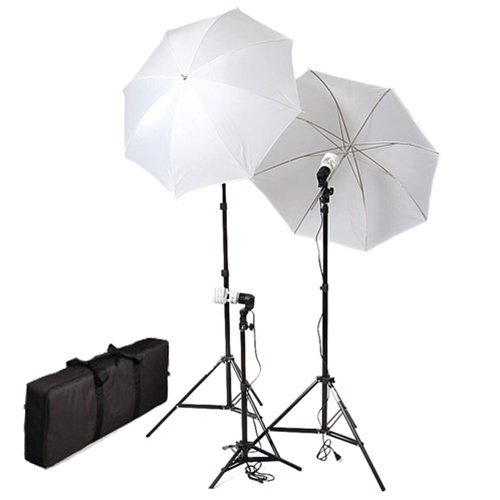
Conclusion
As you can see, a lot of wheels have been turning on the background. From conversion optimization to marketing to accounting and operations — everything has been slowly building up and continues to be built. What’s important to realize and take away is that building a business takes time. There are literally hundreds of things to do and that list is organic; it’s constantly changing and growing. However, every single one of those things stems from starting.
If you’re still struggling to find a product or niche to begin your online business, make sure you check out my last post, How to Start a T-Shirt Business, to learn more about on how I created another business in 24 hours from the idea all the way to $350 in sales — yes, all in 24 hours!

